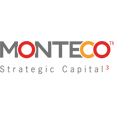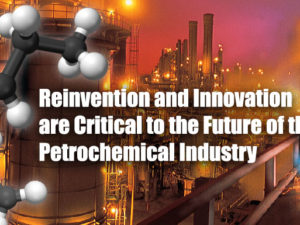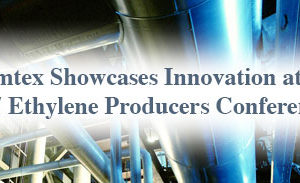
Several articles have been released over recent years highlighting the emergence of new technologies and the impact they will have on the global petrochemicals industry. This latest article ‘Seven chemical separations to change the world’ does well to summarize the significant opportunity and challenges faced by the development of membrane technologies. While the size of the opportunity is driving interest and development, there are naturally several commercialization challenges that lie ahead.
Imtex Membranes is addressing these challenges head on and is well placed to see Permylene become the first commercially adopted membrane technology for mainstream and specialty olefin/paraffin (alkene/alkane) separations. There are several discussion points from the article that Imtex can relate to:
- The opportunity – The size of the global olefins industry is estimated at over $200 billion USD per year and if the energy required for the purification of propylene and ethylene is roughly equivalent to Singapore’s annual energy consumption, that’s nearly $5 billion USD per year (based on 47,000 GWh @ an assumed $0.1/KWh). The opportunities here for any energy savings, efficiency improvements and increased return on investment are enormous.
- Permylene performance – Permylene has now demonstrated stable high olefin/paraffin separation performance, routinely achieving > 99.5% olefin purity (the requirement for polymer grade propylene) with a single stage membrane system. Higher purities of 99.9%+ are achievable with two stages or in hybrid systems with conventional distillation where net savings are still very compelling.
- Applications – the specifics of each application vary widely with the range of possible conditions and compositions. This will influence the most suitable integrated solution.
- Hybrid systems – membranes can be integrated with distillation systems in a number of ways; upstream, overheads, and in parallel. Due to its high separation performance Permylene is being considered within all these configurations. The feasibility of which very much depends on the existing process conditions.
- Replacing distillation – Permylene is being considered as a replacement for distillation within new process flow schemes. The early consideration of such a system within the design of a plant allows a consideration for optimal integration.
- Capacity expansions – membrane technology is well suited to incremental capacity expansions and debottlenecking existing facilities. Due to its modular nature, a wide range of capacities can be considered and may be applied incrementally.
- Other applications – Permylene can also be considered for olefin/paraffin separations where there has been no feasible alternative to date such as recovering valuable olefins from waste and purge streams or separating olefins and paraffins where distillation is practically impossible.
- System size – Imtex has worked with many clients on applications with capacities ranging from hundreds of kg/hr to over 1 million tons per annum. Due to its efficient performance and compact modular design, even at world scale, the size of the overall membrane systems is expected to be much more favorable than incumbent technology for similar capacities. For example, one system designed to process 1.5 million tons of ethylene per annum required a membrane area of < 90,000 m2 (note that required membrane area is a function of stream conditions and composition as well as flow rate). This area is efficiently packaged into a spiral wound membrane element design.
- A key strategy during the development of Permylene was to remain within the confines of tried and tested designs and manufacturing techniques. Permylene is based on the utilization of spiral wound membrane modules which are an industry standard configuration and have been used extensively in various gas and liquid applications.
The next steps highlighted in the article summarize the key considerations required for any new types of technology being introduced to industry:
- Realistic chemical mixtures and contaminants – Imtex is engaging with clients on a wide range of applications using different olefin concentrations and feed stream compositions. Integrated commercial system design concepts have been worked through, and Imtex has undertaken applications-specific testing, including contaminant testing to assess the impact on Permylene.
- Economics and sustainability – It is critical to establish the technical and economic feasibility of the integrated solution in order to proceed further with engineering and development. Imtex is working closely with clients to ensure an attractive business case before moving on to the next step of field pilot demonstration.
- Scale up and pilot scale – This is a critical step in proving the technology in a specific application as feed compositions and process conditions are often unique and performance validation is required over longer timeframes with exposure to inherent process condition variability. Imtex has developed fully automated pilot scale systems that can be deployed on site in a slipstream application. The scale-up process can include small and larger pilot systems as appropriate. Imtex has a close relationship with academia to assist with technology fundamentals and is establishing relationships with strategic partners that will collaborate toward the full commercial success of the technology.
- Training – this is especially true for membrane technology where it is expected to have such a dramatic impact on the industry. Imtex is already playing a vital part in this process by generating awareness in the industry, establishing commercially viable standards for performance characteristics, defining technology integration approaches and through professional development of our employees.
Technological development is critical in advancing the petrochemical industry’s ability to meet growing consumer demand for materials and products. Membrane technology has been highlighted by several sources as a next generation process and experts indicate that gas separation applications are the next area that will benefit. Some of these applications have already achieved commercial success and other areas are being explored. As with all new technologies there are challenges to overcome as indicated above. Imtex Membranes is addressing these challenges head on to have Permylene succeed as the first commercially adopted membrane separation technology for olefin/paraffin separation in the petrochemical industry.
Source – ‘Seven chemical separations to change the world’ http://www.nature.com/news/seven-chemical-separations-to-change-the-world-1.19799





